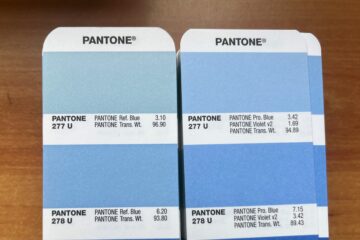Over the last year, we’ve had the pleasure of (virtually) engaging with many different groups, including schools and industry organizations. We find these opportunities invaluable – not only do they give us a chance to share our love of paper, printing and print marketing with the masses but they also allow us to learn about what’s happening in the “real world”.
What we’ve discovered is that the education and knowledge about paper and print marketing is not what it once was. Our future creatives and marketers have shifted their focus to digital marketing and design and are not getting robust training on paper, printing techniques and file set up. Additionally, there is an influx of employees taking on new roles and responsibilities, sometimes outside of their prior work experience. (We’ve heard tales of employees being responsible for purchasing, while also being responsible for getting collateral printed – talk about using both sides of your brain!)
These shifts create an opportunity for our industry to provide more education about paper and printing to the public. Here are a few knowledge gaps we’ve stumbled across – accompanied by resources we’ve made available to help educate:
The Importance of Paper Selection
“Give me the cheapest paper you have” or “I don’t care what kind of paper you use” are two phrases that will make any paper person cringe. Regardless of the role in creating a printed promotion, consumers do have a choice and paper does matter.
Selecting the right paper for a job is an extremely important step in any print project, and knowing the nuances of each type of paper will make the difference in any project. A great tool to help teach paper selection is the paper swatchbook. These books are meticulously put together by paper manufacturers to showcase the print quality and breadth of line of their products. Not only does it help someone understand the qualities of paper, but also how a paper choice impacts the final printed piece. We encourage those new to paper (or those returning to paper) to connect with their local paper merchant to request an updated swatchbook. In addition, we’ve also put together an excellent download on how to read a swatchbook.
Another great resource are the Tips and Techniques videos on our YouTube channel. Not only do these videos provide information about different types of papers, but they also provide great insights into printing techniques. All of the videos are created with the novice in mind and can easily be shared.
The Principles of Print Marketing
Along with paper, the ever-changing world of print technology is another area where knowledge gaps persist. Those buying print for the first time may not be aware of the different types of printing technologies, so it’s important to first help them understand the differences and the benefit of each type. Along with this knowledge, it’s also important to share with them how to spec paper for each print technology. This is where the paper swatchbook comes in handy. Our swatchbooks feature different print technologies, so you can see how the paper performs and the results you can expect.
Putting Ink to Paper
There is a ton of information out there about printing on uncoated paper, but it can be A LOT for those new to the industry. We must work to build trust with these new customers by encouraging open dialogue at the beginning of a project. Consider these five critical conversations that should take place early in a print project.
Other helpful resources are print promotions like Lynx® For Sure or Cougar® w/Purpose. Not only are these pieces are stunning to look at, but there is a lot to learn about what can be done on uncoated paper. To accompany these pieces, we’ve also put together thorough production notes to help explain both the choice of paper as well as the printing method. Be sure to check out the production blogs for For Sure as well as w/Purpose.
And for those more advanced customers, we’ve recently relaunched the popular Print Solutions series. In this series (written by our expert quality service managers), we share tips and tricks for things like preventing ink mottle, mitigating back trap mottle and achieving deep, rich blacks.
Looking for more information? Be sure to regularly check our website for updated resources, blogs and podcasts.

